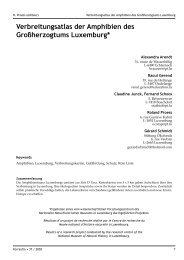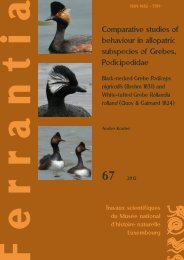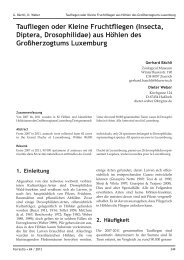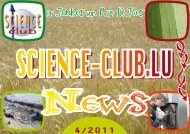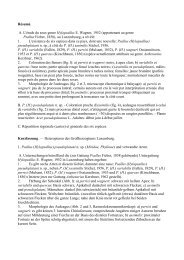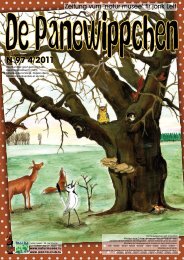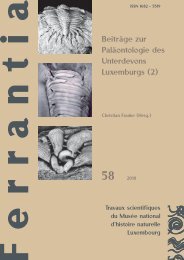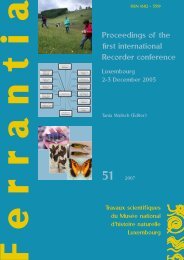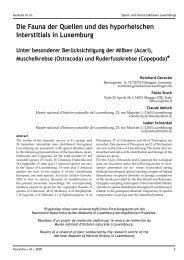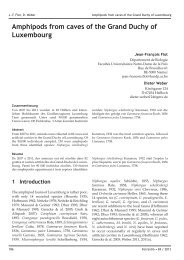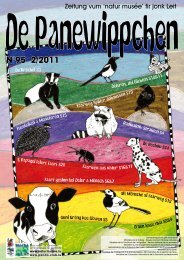Les bryophytes du Luxembourg - Musée national d'histoire naturelle
Les bryophytes du Luxembourg - Musée national d'histoire naturelle
Les bryophytes du Luxembourg - Musée national d'histoire naturelle
You also want an ePaper? Increase the reach of your titles
YUMPU automatically turns print PDFs into web optimized ePapers that Google loves.
J. Werner <strong>Les</strong> <strong>bryophytes</strong> <strong>du</strong> <strong>Luxembourg</strong> - Liste annotée et atlas<br />
Ferrantia • 65 / 2011<br />
Fig. 10: Dicranum viride, une mousse protégée par<br />
la législation européenne, est un épiphyte (rarement<br />
aussi sur le bois pourrissant) assez fréquent dans l'est<br />
<strong>du</strong> Gutland, dans les forêts anciennes ou importantes.<br />
Le dessin montre les feuilles souvent brisées au sommet,<br />
les cellules sub-carrées au-dessus de l'oreillette et<br />
l'apex des feuilles bistratifié. – Dicranum viride, a moss<br />
protected under European law, is an epiphyte (rarely<br />
also on decaying wood), which is not uncommon in Eastern<br />
Gutland, in old or large forests. The drawing shows<br />
the upper part of leaves often broken away, the subquadrate<br />
cells above the auricles and the double stratification<br />
of the leaf apex. Dessin / Drawing: Karl Offner.<br />
Fig. 11: Orthodontium lineare, espèce néophyte en provenance de l'hémisphère sud,<br />
a été observé sur le bois pourrissant, l'humus brut et les talus sablonneux acides. –<br />
Orthodontium lineare, a neophyte species from the southern hemisphere, was observed<br />
on decaying wood, on humus and on acid, sandy slopes. Photo: M.-L. Werner-Braun.<br />
21



